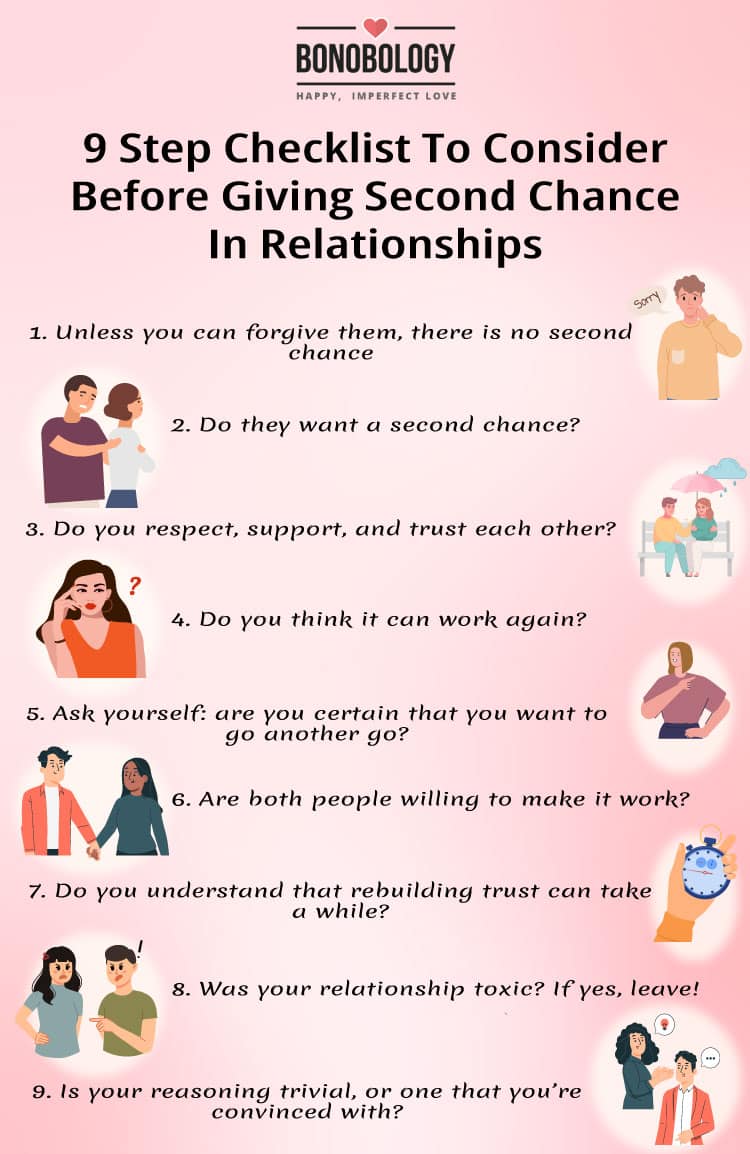How To Convince Someone To Give You A Second Chance

The pursuit of reconciliation after a misstep, whether personal or professional, is a universal experience. Navigating the path to a second chance requires careful consideration, strategic action, and genuine remorse. But how exactly does one effectively plead their case and earn the trust and forgiveness needed for a fresh start?
This article explores the key strategies and psychological principles involved in convincing someone to grant a second chance. Understanding the nuances of apology, accountability, and demonstrable change is crucial for rebuilding broken bridges. We delve into expert advice and practical steps to improve your chances of regaining lost favor.
Understanding the Offense
The first step is a thorough and honest assessment of the situation. What exactly did you do? Was it a mistake, a lapse in judgment, or a deliberate act?
Consider the impact of your actions on the other person. The greater the harm caused, the more significant the effort required to repair the relationship.
Crafting a Sincere Apology
A genuine apology is the cornerstone of seeking forgiveness. According to a study by Ohio State University, a good apology should include acknowledging responsibility, expressing regret, and offering to make amends.
Avoid making excuses or shifting blame. Focus on the other person's feelings and the consequences of your actions.
Saying "I'm sorry, but..." negates the apology, effectively undermining your sincerity.
Demonstrating Accountability
Accountability goes beyond simply saying "I'm sorry." It involves taking ownership of your behavior and its consequences. What specific steps will you take to ensure the offense doesn't happen again?
This might involve seeking professional help, changing your behavior patterns, or implementing new safeguards. Transparency is crucial; be open about the steps you're taking.
Consistency is key. Actions speak louder than words; your commitment to change must be evident over time.
Allowing Time and Space
Forgiveness is a process, not an event. Give the other person time and space to process their emotions. Pressuring them to forgive you will likely backfire.
Respect their boundaries, even if it means waiting patiently for them to be ready to talk. Patience can be a powerful signal of your sincerity.
Making Amends
Offering to make amends demonstrates a genuine desire to repair the damage caused. This might involve financial restitution, offering practical assistance, or simply being there to listen.
The form of amends should be appropriate to the nature of the offense. Consider what would be most meaningful to the other person.
According to Dr. Aaron Lazare, author of "On Apology," the willingness to make amends is a critical factor in the forgiveness process.
Long-Term Change
Earning a second chance is not a one-time event, but an ongoing commitment. You must demonstrate consistent positive behavior over time.
This requires ongoing self-reflection, accountability, and a willingness to learn from your mistakes. Trust is built over time, and easily broken.
If you succeed in gaining a second chance, remember the lessons learned and strive to maintain the positive changes you've made.
When to Move On
Sometimes, despite your best efforts, a second chance may not be granted. It's important to accept this possibility and avoid persistent harassment or manipulation.
Respect the other person's decision and focus on learning from the experience. While closure may be elusive, you can still grow and move forward.
Ultimately, the decision to grant a second chance rests with the individual who was wronged.
Your role is to demonstrate genuine remorse, accountability, and a commitment to lasting change.


















